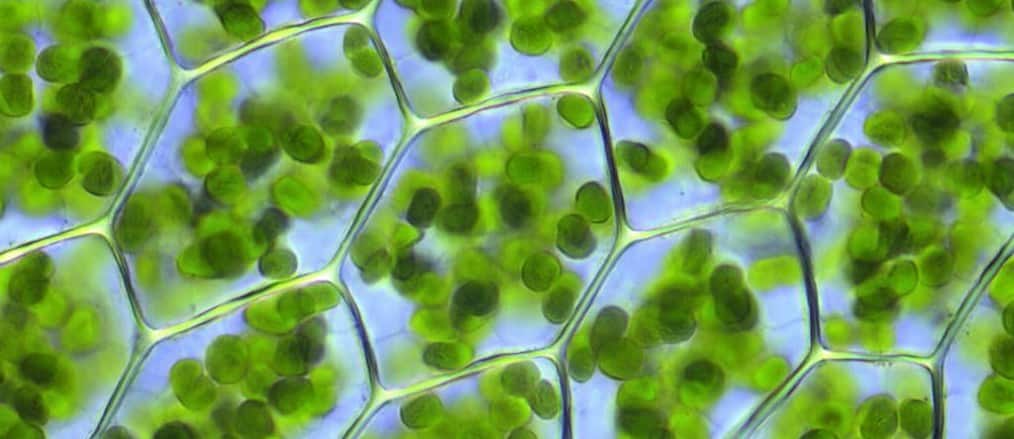How Better Knowledge of The Chloroplast Genome Will Help Shape The Future
We didn’t realise just how cool the chloroplast is – not only does it orchestrate photosynthesis, one of the most important phenomena sustaining life on earth, but it may play a significant role in how we feed the world sustainability.
A review in Genome Biology – ‘Chloroplast genomes: diversity, evolution and applications in genetic engineering‘ – details what we know about the chloroplast genome, how it can be used and how it can be modified, before launching into examples of why chloroplast engineering is likely to have a significant involvement in future crop engineering and in the production of pharmaceuticals and industrial materials.
Our increasing knowledge of the chloroplast genome has been greatly assisted in the last decade or so by the advance in genome sequencing. Currently, the Illumina next-generation sequencing process coupled with bioinformatics tools has enabled the de-novo construction of most of the 800 complete chloroplast sequences that are available at the NCBI organelle genome database. The newer single molecule real-time sequencing is being used in greater amounts due to its ability to sequence an entire chloroplast genome in a single contig.
These technical advances have led us to understand that the chloroplast genome is a highly conserved single circular molecule that includes 120 to 130 genes. The length of the genome varies dependent on species but is between 107kb and 218kb. The genomes are diverse and at the family level can be used for phylogenetic analysis – enabling its use to identify commercial cultivars through DNA barcoding.
Whilst most genetic engineering in crops has been done in the nuclear genome, low levels of expression of the sought protein and the potential escape of transgenes through pollen are two significant limitations. In genetically modified chloroplasts however, these limitations are not present.
Compared to the two copies of transgenes that are normally introduced into the nuclear genome, the chloroplast can genome has been shown to be able to handle 10,000 copies, present in each plant cell. The result is extremely high levels of expression of the transgene when compared to nuclear expression.
Further, the chloroplast genome is inherited in the maternal line which reduces or removes the potential for escape of the transgene.
Cassettes are inserted into the chloroplast genome using biolistics, resulting in either homologous or non-homologous end joining to stitch the transgene into place. Any cassettes inserted into the mitochondrial or nuclear genomes aren’t expressed due to the inability for chloroplast regulatory sequences to function in those genomes. Once confirmed to have been successfully inserted, a homoplastic state where all non-transformed chloroplast genomes are removed is usually achieved from two or three generations of selection.
The overexpression of genes such as the Bt protein has been demonstrated in chloroplasts. Resistance against Erwinia soft rot, tobacco mosaic virus, whitefly, aphids, lepidopteran insects, bacterial pathogens and viral pathogens have all been accomplished in a variety of commercially cultivated crops through the overexpession of native or transges in the chloroplast.
Figure from article – the entire figure and description was included to demonstrate the variety of advances made with engineered chloroplasts, such as biopharmaceutical production, pest resistance, abiotic stress resistance and increased nutrient expression.
A current research aim for some scientists has been to downregulate specific genes as a biotic stress defence mechanism. By inserting a gene expressing a double stranded RNA into the chloroplast, the resultant RNA interference has the ability to disrupt genes within the pest target. For example, expression of a dsRNA in potato targeted at β-actin within Colorado potato beetle larvae has been shown to kill the larvae and protect the plant from damage.
Another food related area that could be impacted by chloroplast engineering is the ability to increase the nutritious value of food in a similar way to the aim of the Golden Rice Project to increase the vitamin A content of rice. The paper cites vitamin E, a precursor to which is derived from the consumption of seed oils, as an area of current research. While seeds oils can be produced from soybean, rapeseed and maize amongst others, these particular dietary sources only contain low doses of α-tocopherol. However, engineering a particular gene into the chloroplast that increases the catalysis of this pre-cursor has been shown to result in a 10-fold increase in α-tocopherol production.
Agricultural and nutrition gains are not the only benefits that may be conferred by chloroplast engineering. Chloroplast derived enzymes and biomaterials avoid the cost, stability and purification problems of industrial fermentation systems and their use in producing pharmaceuticals could alleviate those problems plus the associated problems of short shelf lives and the need for refrigeration for storage. An example of biopharmaceuticals overcoming these problems is provided in the paper of lettuce leaves having been used to express protein drugs. The processed leaves can be stored at room temperature indefinitely after being grown in approved greenhouses. Further, as the plant cell wall is not broken down until it reaches our gut microbes, the drug contained within the cell is protected from degradation and loss due to its interactions with other enzymes within the body. The result is the delivery of all of the protein into the gut lumen which is then delivered through the body to the drug target.
The future of chloroplast engineering relies on sequencing of genomes of more crop genera, obtaining better knowledge of translation processes and optimising codon usage. Gains in our knowledge in these areas coupled with the advantages that chloroplast engineering has in gene expression rates could speed up sustainable yield increase in our food production, whether that be by simpler identification of particular cultivars through molecular identification to assist traditional cross-breeding for particular traits or by engineering in new or superior traits in a more reliable fashion.























